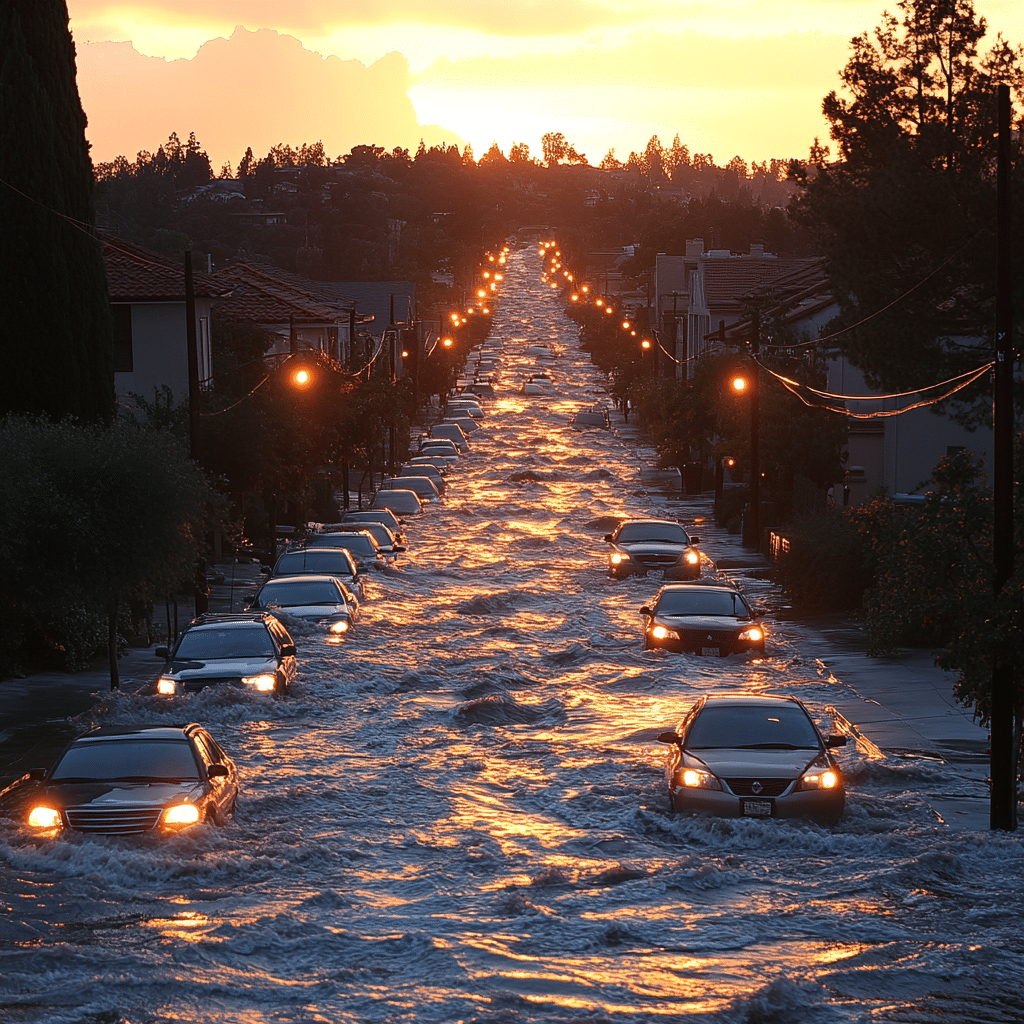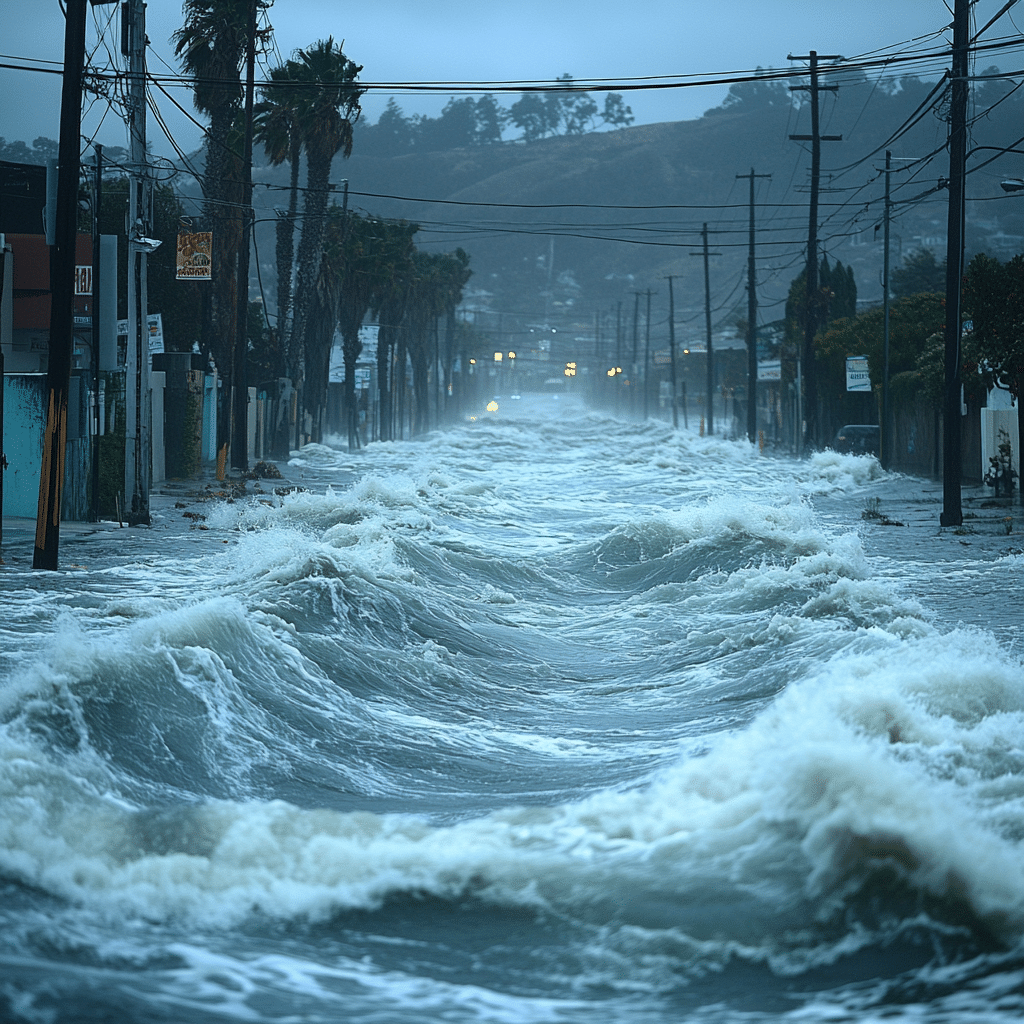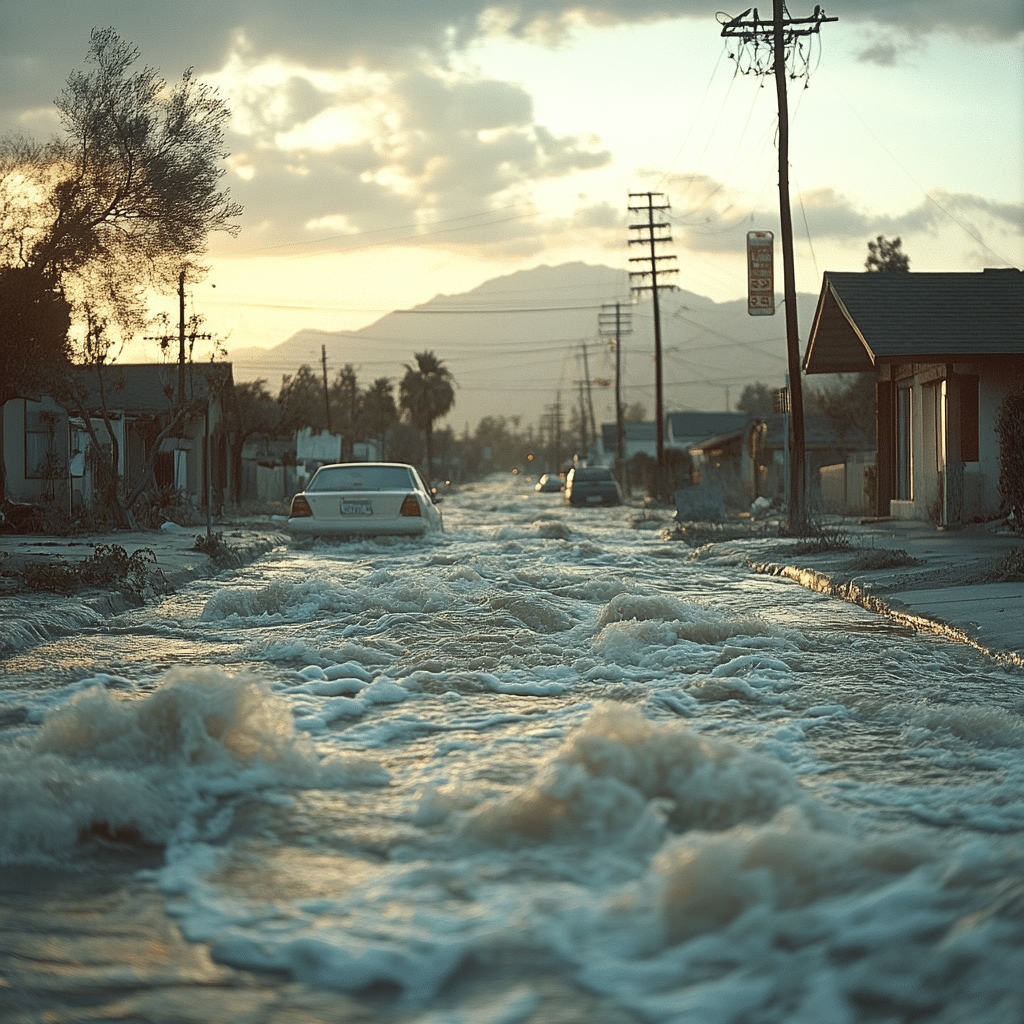California Flooding Storms: An Overview of the Crisis
The state of California has been a victim of relentless California flooding storms for the past few months, culminating in unprecedented destruction and losses. The once-pristine and sun-drenched landscape has now become the backdrop for catastrophic weather, causing fatalities, displacement, and colossal financial implications. This article delves deeply into the recent incidents, their impact on California’s residents, and the urgent need for robust disaster management strategies.
The Severity of California Flooding Today
California has seen its heaviest rain in decades, with meteorological data indicating that January and February of 2024 experienced rainfall levels not seen since the early 20th century. Cities like Sacramento, San Francisco, and Los Angeles have faced severe flooding, resulting in significant damage to infrastructure and housing.
Across California, authorities have reported an increase in emergency responses. The California Office of Emergency Services noted that there have been over 1,000 rescues conducted between January and March 2024. Moreover, the floods have disrupted the daily lives of millions, as highways and major roads remain submerged under water, hampering both relief efforts and routine travel.

| Date Range | Key Events & Details |
| December 31, 2022 – March 25, 2023 | Multiple periods of heavy rainfall due to numerous atmospheric rivers (ARs) causing floods in Southern California, Central Coast, Northern California, and Nevada. |
| February 5, 2024 | Atmospheric rivers continue contributing to record rainfall in California, following similar patterns from previous years. |
| March 1, 2024 | Commemoration of the Great Flood of 1862, the deadliest flood in California’s history, as a reminder of the potential severity of flood events. |
| March 3, 2024 | El Niño contributes to elevated precipitation but is not the sole cause; increased global temperatures enable air to hold more moisture, leading to greater rainfall. |
| Factor | Impact |
| Climate Models | Indicate increasing flood risks due to more intense atmospheric rivers and rising sea levels. |
| Sea Level Rise | Contributes to higher flood risks, exacerbating the impact of heavy storms and rainfall. |
| Wildfires | Destabilize slopes, increasing the likelihood of landslides and worsening flood outcomes. |
| Atmospheric Rivers (ARs) | Play a crucial role in bringing both beneficial and harmful precipitation to California. |
| Event | Description |
| Great Flood of 1862 | Most destructive flood in California’s history, a critical historical reference for understanding the potential impact of major flooding events. |
| Contributing Factor | Description |
| El Niño | Results in higher levels of precipitation but is not the sole contributor to recent storms. |
| Increased Global Temperatures | Allows for more moisture in the air, leading to higher volumes of water vapor and greater precipitation. |
Notable Incidents and Their Impact
Environmental Ramifications: Rain in California and its Consequences
Persistent rain in California has led to significant environmental impacts as well. Overly saturated soil has increased the likelihood of landslides in hilly regions, while the overflow of sewage and industrial waste into water bodies has resulted in water contamination besides causing harm to local wildlife.
Additionally, the floods pose a considerable threat to California’s agricultural sector. Acres of farmland in the Central Valley have been submerged, jeopardizing the state’s leading produce production and the livelihood of countless farmers. According to the California Department of Food and Agriculture, crop losses are estimated to reach $500 million.

Measures and Recommendations for the Future
The recent California flooding storms underscore the urgent need for improved flood management systems. Experts from the University of California, Berkeley have emphasized the importance of multi-tiered approaches, such as:
Looking Ahead: The Road to Recovery
As California wrestles with the deadly impact of California flooding storms, recovery and rebuilding efforts are set to play a pivotal role in the state’s future resilience. Federal assistance, state-level initiatives, and local community efforts must coalesce to restore affected areas and guard against future disasters.
Lessons learned from the response to these 2024 storms will undoubtedly shape disaster preparedness and infrastructure planning in California, fostering a more resilient environment capable of facing the weather challenges to come. As the state rebuilds, it stands as a testament to human resolve and the pressing need for adaptive strategies in the wake of natural calamities.
Conclusion
The current flooding crisis in California highlights the dire need for comprehensive flood management and proactive emergency preparedness. With the state facing ever-growing challenges from climate change, the lessons learned and strategies implemented today will be pivotal in safeguarding California’s future.
Fun Trivia and Interesting Facts about California Flooding Storms
Unpredictable Weather Patterns
California is known for its sunny beaches, but it also faces some of the most unpredictable and severe weather patterns. For instance, the state has experienced drastic shifts from droughts to flooding. The 2017-2019 period saw major deluges that caused massive destruction. Guess what? This was just a glimpse of Mother Nature’s wild side. Speaking of surprises, did you hear about the fascinating situation along the Israel Lebanon border? Just like the unexpected skirmishes there, California flooding storms can catch everyone off guard, bringing about significant change in an instant.
Mysterious Rain Patterns
Rainfall in California isn’t like in most other places. One year, there’s a deluge; the next, hardly a drop. A pattern so erratic, you’d think it came straight out of a movie. Speaking of which, have you ever wondered, Did John wick really die? Just like the uncertainty in the movies, California’s rain patterns can be just as unpredictable, often leaving scientists scratching their heads. These storms can sometimes lead to severe flooding, causing significant damage and disruption across communities.
Impact On Employment
Flooding doesn’t just affect homes and roads; it impacts jobs, too. Take, for instance, how businesses may need more staff to handle the aftermath of floods. Interestingly, during stormy periods, you might even find Marshalls Hiring more people to manage increased demand in emergency supplies and clothing. The economic ripple effect can be as sweeping as the water itself, creating both challenges and opportunities in the job market.
Cultural Insights
California flooding storms have a unique place in local lore and culture. These events have inspired countless stories and even artistic expression, similar to how Janet smollett in Her community work contributes to a rich tapestry of stories and resilience. The capacity of communities to bounce back from such storms often hinges on shared experiences and collective efforts. It’s a testament to human spirit and ingenuity in the face of nature’s unpredictable fury.
Academic Interest
These flooding storms pique the interest of numerous researchers and meteorologists. The data collected helps in better understanding weather patterns and potential preventive measures. Similarly, those curious about the effect of extracurricular elements on academia might find luke murray offering intriguing insights. By observing and analyzing these phenomena, experts can devise strategies to mitigate the impact of future storms, ultimately saving lives and reducing economic losses.
Did you know that California’s tech industry and innovative academic circles constantly analyze storm data? It’s a prime example of how technology and research converge, generating invaluable insights for the future.

What parts of California are getting flooded?
Flooding has affected various parts of California, including Southern California, the California Central Coast, Northern California, and portions of Nevada. These regions have experienced significant water inundation due to heavy rainfall.
What is causing the floods in California?
Flooding in California is largely driven by atmospheric rivers, which are powerful storm systems carrying vast amounts of moisture. These storms have become more intense due to increased global temperatures and higher moisture levels in the air, and are compounded by sea level rise and slope-destabilizing wildfires.
What was the largest flood in California history?
The Great Flood of 1862 holds the record as the most destructive flood in California’s history. During this event, unprecedented rainfall caused the Sacramento and San Joaquin valleys to turn into an inland sea, leading to widespread devastation.
Why is southern California getting so much rain?
Southern California is experiencing heavy rain primarily because of atmospheric rivers. Additionally, the El Niño phenomenon and higher global temperatures, which allow the atmosphere to hold more moisture, contribute to the elevated rainfall levels.
Is California at risk of sinking?
California is not at risk of sinking. The state’s current concern is primarily about the increasing frequency and intensity of floods rather than any risk of large-scale subsidence.
What was the worst storm in California history?
The worst storm in California’s history includes the atmospheric river events between December 31, 2022, and March 25, 2023, which caused significant flooding across various parts of the state.
Which California city has the most flooding?
Stockton often experiences severe flood risks due to its location in the San Joaquin Valley, where it is prone to water accumulation from surrounding rivers and rainfall.
Where does the flood water go in California?
Floodwater in California typically drains into rivers, lakes, and eventually the Pacific Ocean. In urban areas, stormwater systems and pumps help redirect excess water to prevent prolonged flooding.
What caused all the rain in California?
The notable rain in California is due to a combination of atmospheric rivers, El Niño conditions, and higher global temperatures, which result in more moisture being stored in the atmosphere and heavier precipitation.
What is the 1000 year storm in California?
A “1000 year storm” refers to an exceptionally rare and severe storm event that statistically has a 0.1% chance of occurring in any given year. Such events bring extraordinary rainfall and flooding.
What was the largest flood on Earth?
The largest flood ever recorded on Earth happened during the Missoula Floods around 15,000 years ago. These floods occurred when a glacial dam broke, releasing a deluge across the Pacific Northwest.
How many inches of rain fell in 1862?
During the Great Flood of 1862, some reports indicate that parts of California received up to 36 inches of rain, transforming regions into vast lakes and wreaking havoc on communities.
What is the rainiest city in California?
Crescent City holds the title of the rainiest city in California, with annual rainfall averages significantly higher than other cities in the state due to its location and coastal influence.
Why is the water so cold in Southern California?
The water is often cold in Southern California because of the California Current, which brings cool water down from the northern Pacific Ocean, affecting coastal temperatures.
What causes the pineapple express?
The “Pineapple Express” is caused by atmospheric rivers that transport moist air from the tropical Pacific near Hawaii to the U.S. West Coast, leading to heavy rainfall and potential flooding.
What areas in California are at the highest risk of a flood?
Areas at the highest risk of flooding in California include the Sacramento-San Joaquin Delta, the Central Valley, and coastal regions like Los Angeles and San Francisco due to their geographic and climatic conditions.
Is LA flooding in 2024?
LA has experienced flooding in 2024 due to a series of intense storms and atmospheric rivers carrying heavy rainfall, causing significant water accumulation in some areas.
What part of San Diego is flooded?
Specific areas of San Diego have faced flooding, particularly neighborhoods near low-lying regions and coastal zones, as heavy rains overwhelm drainage systems and natural water barriers.
Where does the flood water go in California?
Floodwater in California typically makes its way into rivers, drainage systems, and eventually the Pacific Ocean. In urban settings, stormwater systems help manage and redirect water flow to prevent prolonged flooding.



